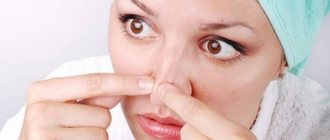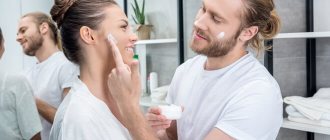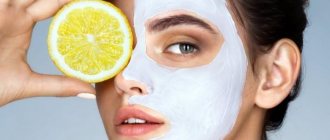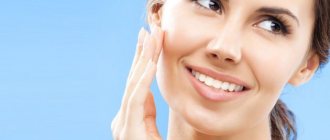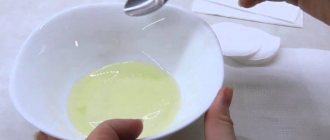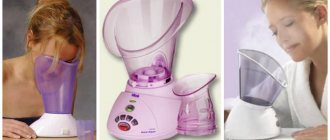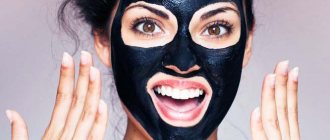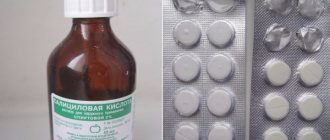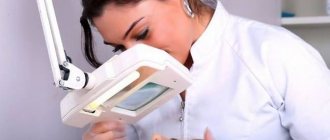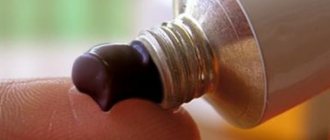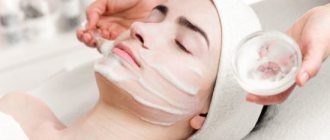Beneficial properties of yeast for the face
Much of what is needed to restore facial skin is contained in yeast. Manufacturers of cosmetics took advantage of this - ready-made yeast masks can be purchased in almost any store. But women know how to save money and have figured out that homemade masks are no different from “factory-made” ones. The main thing is to choose high-quality yeast.
It is known that yeast is a natural fungal culture, the chemical composition of which is impressive! It’s impossible to count all the benefits, but we will highlight exactly those components of yeast that help maintain youthful skin and provide it with a healthy appearance.
- A wide variety of vitamins that are mainly involved in metabolic processes (B vitamins, vitamins PP, E, D, C and others).
- Amino acids and antioxidants (responsible for the synthesis of collagen and elastin).
- Folic and pantothenic acids (have anti-inflammatory properties).
- Minerals: zinc, iron, iodine, sodium, calcium, potassium, magnesium (slightly dry out acne and enhance the protective functions of the skin, restoring its elasticity and freshness).
- Niacin (helps improve complexion).
What are the benefits of yeast masks
Many people are probably wondering which yeast is best to use for cosmetic purposes. The answer is any! Both baker's yeast from the nearest grocery store and brewer's yeast, sold in any pharmacy, will be able to help combat your skin problems. The only caveat is that it is better to give preference to raw yeast rather than dry. So what are their benefits?
Yeast contains a whole storehouse of valuable vitamins and microelements necessary for the vital activity and youth of cells. Therefore, yeast masks will get rid of acne, return the skin to a healthy, blooming appearance, and even make fine wrinkles visible. Judge for yourself:
— thiamine (vitamin B1) has a tonic effect, providing the skin with energy;
— riboflavin (vitamin B2) accelerates cell regeneration, making the skin look fresh and renewed;
— nicotinic acid (vitamin B3) effectively normalizes the functioning of the sebaceous glands and renews epidermal cells. This element is often used as an active ingredient in cosmetic acne creams;
— pantothenic acid (vitamin B5) protects the skin from the negative effects of the environment, stress and the negative chemical effects of cosmetics;
— folic acid (vitamin B9) has an anti-inflammatory and drying effect, healing acne and preventing the spread of acne;
— amino acids activate the process of natural collagen production, due to which wrinkles are smoothed out, the skin acquires a well-groomed appearance and elasticity;
- tocopherol (Vitamin E), which is popularly called the “female” vitamin, helps strengthen the immune system, restores skin elasticity, tightens the facial contour, improves blood circulation;
-biotin (vitamin H) moisturizes the skin and prevents it from peeling;
— in addition, yeast contains mineral elements such as potassium, magnesium, calcium, manganese, copper, phosphorus, zinc, which are necessary for proper metabolism, regulation of the sebaceous glands and a beneficial effect on all processes occurring in the skin.
Treating acne with yeast is effective for almost all skin types, this is another amazing feature of the product:
— for oily skin types, yeast microorganisms do an excellent job of treating enlarged pores, narrowing and cleansing them, relieving the face of an unpleasant shine;
— for those with dry skin, yeast masks with a moisturizing effect are suitable; you just need to choose a suitable recipe that eliminates peeling and irritation of the skin;
— owners of normal and mixed skin types will also benefit from using yeast for acne and blackheads on the face. Vitamins and microelements will prolong the youth of the skin and give it a delightful dullness and radiance;
— it is noteworthy that along with the use of yeast for acne, its use as an anti-aging agent is quite effective. If the skin has lost its firmness and elasticity with age, masks with yeast will restore its youth by restoring lost collagen.
Rules for preparing and applying masks
Women who like to prepare a wide variety of masks at home are probably already familiar with the basic rules for their preparation, but we will still remind you of the most important ones, and also reveal a few secrets that will help achieve better results in the shortest possible time:
- Prepare the mask immediately before applying it in a porcelain or glass container. Remember: if the mask is left on for more than 10 minutes, many of its beneficial properties disappear. You should also not mix ingredients in plastic or iron containers.
- Buy only fresh yeast. Do not use their dry model under any circumstances.
- Before applying the composition to your face, check it for allergenicity. To do this, apply a small amount to the thin skin of your wrist and observe the reaction.
- In the meantime, steam your face so that the pores open as much as possible and all the beneficial components are absorbed into the skin. For problem skin, you can prepare a herbal decoction and breathe over it for several minutes (the so-called steam bath). It is best to prepare a decoction of calendula, chamomile, string or nettle. These herbs have anti-inflammatory properties, so they will be a good addition to a yeast mask.
- Apply the mixture to slightly damp facial skin with massage movements. While the composition is active, we recommend that you relax your facial muscles as much as possible; it is best to lie down and not talk to anyone at this time.
- Rinse off the mask with cool water, preferably clean, and not from the tap. To consolidate the result, you can “close” the saturated pores with pre-prepared ice cubes. You can also freeze decoctions of the above herbs, or green tea, or pure water (mineral water also has good properties).
- Make yeast masks 2-3 times a week. It is best in the evening, but no later than an hour before bedtime. If you carry out the procedure during the day, then it is advisable to sit at home for at least 2 hours afterward.
- And lastly: after the mask, be sure to apply a light moisturizer to your facial skin!
Yeast mask: indications and contraindications
Like any other cosmetic product, a yeast face mask has a number of indications for use, which you need to familiarize yourself with before you start preparing it. Yeast masks are recommended to be used:
- for oily skin: no cosmetic product can so narrow enlarged pores and eliminate unhealthy oily shine on the face in the shortest possible time;
- This face mask is good for problem skin: brewer’s yeast will cope well with inflammation, pimples and blackheads;
- for aging skin: the benefit of yeast is that it restores collagen lost with age in the skin, as a result of which your skin regains youth and elasticity;
- for dry skin: supplement the mixture with the necessary moisturizing ingredients, for example, yeast, milk - a face mask of this composition will perfectly care for dry skin;
- for excessive pallor or redness of the skin of the face: yeast tones and gives the skin a beautiful matte or pearlescent shade that will delight anyone.
Yeast mask recipes
Yeast is combined with many ingredients. If you choose the right products that will be aimed at solving the problem of acne, then good results can be achieved after just a few procedures.
Some ladies claim that the effect is noticeable already from the first time! We have collected the most popular recipes, the reviews of which are mostly positive. We hope you find a recipe that suits you and finally get rid of obsessive acne.
We remind you that the main component of all masks is fresh, baker's or brewer's yeast.
With hydrogen peroxide
You will need:
- 2 teaspoons yeast;
- 1 teaspoon hydrogen peroxide (3%);
- 0.5 teaspoon of vegetable oil (any);
- 0.5 teaspoon green tea (no sugar).
Preparation: First mix the yeast and hydrogen peroxide until smooth, then gradually add the remaining products. Apply the composition to problem areas in a thick layer, without rubbing into the skin of the face with light movements. Leave for 20 minutes, then rinse with warm water and wipe your face with a cotton swab dipped in green tea or chamomile infusion.
With lemon juice and protein
You will need:
- 10 g brewer's yeast;
- 15 g of heated water;
- 5 g lemon juice;
- 1 egg white.
Preparation: mix yeast, water and lemon juice (instead of juice, you can add a few drops of lemon essential oil), wait a few minutes for bubbles to form. Meanwhile, beat the protein into a fluffy foam and gradually add it to the main composition. Leave this mask on for 20 minutes, rinse off first with warm, then cool water. To enhance the effect, you can also add three drops each of tea tree and eucalyptus essential oils.
With milk, honey and egg
You will need:
- 1 tablespoon yeast;
- 2 tablespoons milk;
- 1 teaspoon honey;
- 1 egg;
- 1 tablespoon olive oil;
- 1 tablespoon rice flour (optional)
Preparation: Add yeast to heated milk and stir until smooth. Beat the egg into a fluffy foam and add to the previous mixture. Then add the remaining ingredients (you can use oat or wheat flour instead of rice flour). You should get a fairly thick mixture, which you should apply in a thick layer to your face. After 20 minutes, rinse off the mask with warm water.
With clay
You will need:
- 25 g yeast;
- 25 g water;
- 1 tablespoon green clay;
- 1 tablespoon of kefir;
- 1 tablespoon honey.
Preparation: dilute the yeast in warm water and leave to react in a warm place for 20-30 minutes. Then add the rest of the ingredients and mix thoroughly. Apply the resulting mixture to your face and leave for 15 minutes. Wash off the mask with cold water.
With tomato
You will need:
- 10 g brewer's yeast;
- 1 medium ripe tomato;
- 5 g citric acid;
- 15 g dry mint leaves;
- 30 g oatmeal.
Preparation: mix yeast with tomato pulp and citric acid. Grind mint leaves and oatmeal in a coffee grinder. Stir into the first composition. Apply the resulting creamy mask to your face for 20 minutes, then rinse with settled water at room temperature.
With kefir and sauerkraut
You will need:
- 10 g baker's yeast;
- 15 g kefir;
- 5 g sauerkraut juice.
Preparation: mix all ingredients. To achieve a thick composition, add a few grams of any flour (oatmeal, rice, rye) or black bread crumb. The mask is applied to the steamed face in a thick layer and left until dry (approximately 20-30 minutes). Wash off the mask with warm water and wipe your face with green tea. It is recommended to apply this composition 3 times a week for a month, then take a break.
With vitamin E and sour cream
You will need:
- 1 tablespoon yeast;
- 1.5 tablespoons of sour cream;
- 1 tablespoon of kefir;
- 1 tablespoon of mineral water (high quality);
- 1 capsule of vitamin E.
Preparation: mix the yeast with heated mineral water and leave for a few minutes. Meanwhile, heat the kefir and sour cream. Mix both masses and don’t forget about vitamin E. Apply the mask to your face for 20 minutes, then rinse with warm water and rest for about 15 minutes, covering your face with a linen napkin soaked in warm water.
With yogurt and starch
You will need:
- 15 g brewer's yeast;
- 3 tbsp. yogurt (preferably homemade);
- 15 g starch;
- 5 g lemon juice;
- 3 drops of thyme essential oil;
- 3 drops of peppermint essential oil.
Preparation: mix all ingredients until smooth and apply the resulting composition to pre-steamed facial skin. Leave on for 20 minutes, then rinse with warm water and wipe your face with ice cubes from clean water.
At the end of the article, I would also like to say that a very simple mask helps against acne: dilute a tablespoon of yeast in warm water, and apply the resulting mixture to your face. The effect will be amazing, even without additional ingredients.
